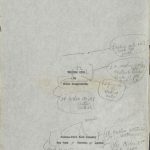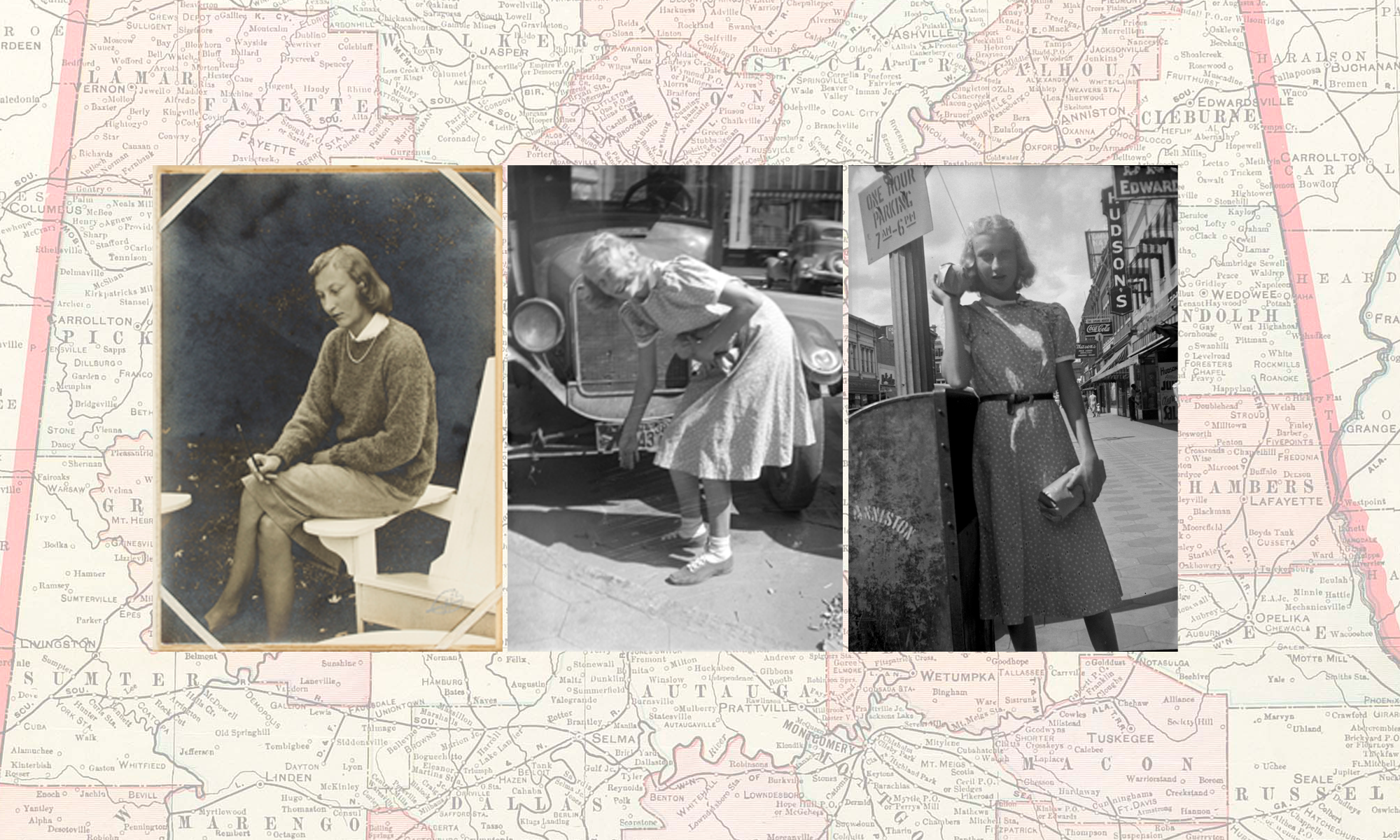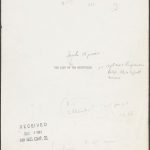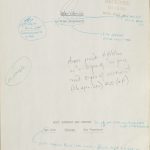Published Works
Sanguinetti published one short story and four novels, works that date as early as the 1950s and were published in the 1960s and early 1970s. Below are the manuscripts of the short story and three of the novels, in addition to comments on the fourth. They show editorial markings which in some cases represent fairly substantial changes to the manuscripts. Each section also includes a note on how the novel was received by reviewers and critics.
Click on the links below to read the texts available. In addition, clicking any of the images below will allow you to read the correspondence at full size.
Sections
“To You, Frere ‘Twig'” (Mademoiselle, 1960)
The Last of the Whitfields (1962)
The New Girl (1964)
The Dowager (1968)
McBee’s Station (1971)
“To You, Frere ‘Twig'” (Mademoiselle, 1960)
This short story, set in the 1950s, focuses on a preteen Southern girl’s observations about her slightly older brother. It was later expanded into Sanguinetti’s first novel, The Last of the Whitfields.
Note: Pagination re-starts near the middle of the document, but it is a single, continuous manuscript.
The Last of the Whitfields (1962)
An expansion of her short story “To You, Frere ‘Twig,'” Sanguinetti’s first novel focuses on the titular Whitfield family, from fictional Ashton, Georgia, a common setting for her works. It is a comedy on growing up and on making sense of the changing modern South and how it is perceived by people outside the region, including a newspaper reporter from New York.
Manuscript
Presented below is a late, typed draft of the novel with handwritten changes. Note: The manuscript includes two chapter 12s, below numbered 12a and 12b, so subsequent chapter numbers differ from the final published version (manuscript 12b is final 13, manuscript 13 is final 14, etc.).
Part I
Chapter 01
Chapter 02
Chapter 03
Chapter 04
Chapter 05
Chapter 06
Chapter 07
Chapter 08
Chapter 09
Part II
Chapter 10
Chapter 11
Chapter 12a
Chapter 12b
Chapter 13
Chapter 14
Chapter 15
Part III
Chapter 16
Chapter 17
Chapter 18
Chapter 19
Chapter 20
Chapter 21
Chapter 22
Chapter 23
Chapter 24
Chapter 25
Chapter 26
Chapter 27
Chapter 28
Chapter 29
Reception
Published reviews show readers’ relief at seeing a different, less seamy side of Southern life than normally experienced in the works of William Faulkner and Erskine Caldwell, but they also wonder whether a novel can be funny and significant at the same time. They praise Sanguinetti’s skill as a writer, especially having taken on the challenging point of view of a young author, but criticize the novel for being thin on plot. They also second-guess the audience: Can Northerners understand or appreciate this work? Will they want to read it?
The New Girl (1964)

Sanguinetti’s second novel follows the narrator of Whitfields, 13-year-old Felicia, into a new phase of her life: boarding school in Virginia.
Manuscript
Presented below is a late, typed draft of the novel with handwritten changes. The manuscript also includes a page of errata.
Part I The New Girl
Chapter 01
Chapter 02
Chapter 03
Chapter 04
Chapter 05
Chapter 06
Chapter 07
Chapter 08
Chapter 09
Chapter 10
Part II Home: A Dance and a Death
Chapter 11
Chapter 12
Chapter 13
Chapter 14
Part III School
Chapter 15
Chapter 16
Chapter 17
Chapter 18
Chapter 19
Chapter 20
Chapter 21
Chapter 22
Reception
Published reviews follow from those of Whitfields, offering continued praise for her light, humorous tone but also criticisms of the novel’s plotting — it hinges entirely on Felicia’s personality, not on a less-than-original boarding school plot. Reviewers also recognize a change in tone for Felicia as she grows up; some say it is less funny and therefore less fun to read, while others praise the character’s maturation. All seem to agree that it is sometimes a bit too “out there,” with drama and silliness mismatched to a realistic portrayal of its central character.
The Dowager (1968)
This novel takes as its main character the city of Charleston, South Carolina, sometimes referred to as the “Old Dowager Woman.” The protagonist is a young woman named Winky Carr, a relative of the Whitfield family, and hers is a story of romance and of coming to terms with the titular old lady. It is set in the modern day.
There is no manuscript available for this novel.
Reception
The novel was a departure in tone from her previous works, and this new approach is what many published reviews focus on. Unfortunately, its romantic plot and tone cause some reviewers to dismiss it as unimportant, as literature for women. Its scope is indeed considered relatively small, but it is filled with supremely well-drawn characters and explores a richly created setting.
McBee’s Station (1971)
Her last published novel, also set in the modern day, returns the reader to Ashton, Georgia. It centers on Letitia Graham McBee, a widow from an old but fading Virginia family. Mrs. McBee comes into conflict with local “poor whites” as well as her own son, John, an obstinate liberal. (According to correspondence, the titular last name is pronounced with the emphasis on the first syllable: MAC-bee.)
Manuscript
Presented below is a late, typed draft of the novel with handwritten changes. The manuscript also includes a copyright page and a blurb about the author.
Chapter 01
Chapter 02
Chapter 03
Chapter 04
Chapter 05
Chapter 06
Chapter 07
Chapter 08
Chapter 09
Chapter 10
Chapter 11
Chapter 12
Chapter 13
Chapter 14
Chapter 15
Chapter 16
Chapter 17
Chapter 18
Reception
Published reviews were fewer and farther between for her fourth novel, but they were largely positive. Once again, the characters are considered more memorable than the plot. Here, working in a more dramatic and tragic mode than before, her prose shines, especially the dialogue (a noted weak point for The Dowager); and the political aspects of the story are more deftly handled.


